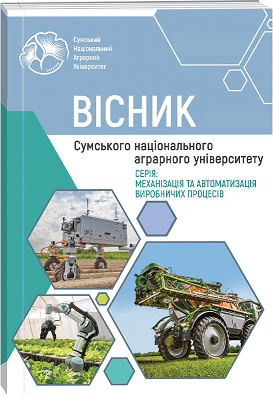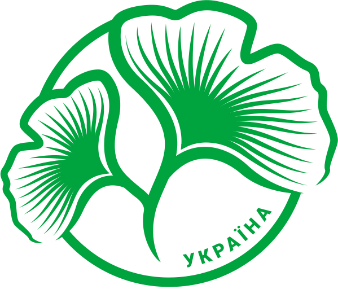MAIN ASPECTS OF CLASSIFICATION OF DRIVEN SYSTEMS OF AGRICULTURAL EQUIPMENT
Abstract
The article presents an analysis of the main classifications of agricultural technology with their integration into a soil system in accordance with the indicators and parameters of the analysis of the interaction of destruction with soil. It is clear that most agricultural machinery has its own classification of types of running systems, which are connected to each other by related parameters. Based on this assertion, it is possible to carry out their unification for the final classification, which would be reasonable and maximally descriptive of all possible parameters of basic running systems. For the beginning of the classification, the necessary washing and evaporation of the type of wheel crash can be divided into active, passive and reactive. All active wheels (caterpillars) drive the technology. Passive ones are the driving wheels (caterpillars), and reactive ones are actually the driving wheels of various equipment. A different mental classification of the running systems of agricultural technology is also the universality in the formulation of foreign and veterinary production, based on the principles of agriculture features of the front and back development. Based on the classification of running systems and their development, the classical scheme of values does not make it possible to characterize in detail the current running systems with regard to their features. Based on such problems, we propose to formulate a powerful formulaic characteristic that can completely characterize all types of running systems. Further, this classification makes it possible to analyze the characteristics of the interaction of destruction with soil with a clearer understanding of all possible aspects and factors contributing to the implementation of traction force unit. An equally important factor in the stagnation of this classification is the loss of the possibility of reinforcing the additional functions of agricultural technology, so that it is not abused in the old minds, and is not imposed by different dealers. All this confirms the universality and effectiveness of this classification in the selection, analysis and development of agricultural technology. The flexibility of the global classification actually allows you to model parameters for the creation of new types of running systems and their further description. The formula above describes the basic layout of the attack and allows us to understand the basic parameters that require consideration in the conduct of further investigation.
References
2. Chepizhnyi, A.V., Zubko, V.M., Kovalenko, V.Ie. Shutko, V.V. (2024). Vyznachennia koefitsiienta oporu perekochuvannia suchasnoi ahrarnoi tekhniky na riznykh ahrofonakh [Determination of the overflow resistance coefficient of modern agricultural techniques on different agrophones] Visnyk Sumskoho natsionalnoho ahrarnoho universytetu. Naukovyi zhurnal. Seriia mekhanizatsiia ta avtomatyzatsiia vyrobnychykh protsesiv» Vyp. 3 (57), 2024 – P. 59-68. [in Ukrainian]
3. Kupchyk, V. I., Ivanina, V. V., Nesterov, H. I. ta in. (2010). Grunty Ukrainy: vlastyvosti, henezys, menedzhment rodiuchosti. [Lands of Ukraine: power, genesis, management of family power]. Kondor, Kyiv. [in Ukrainian]
4. Lebedev, A. T., Artemov, M. P. Obgruntuvannia efektyvnosti vykorystannia gruntoobrobnykh mashynno-traktornykh ahrehativ modeliuvanniam partsialnykh pryskoren [Rationalization of the effectiveness of the use of soil tillage machinetractor units by modeling partial]. Leonid Pogorilyy Ukrainian Scientific Research Institute. Collection of scientific papers. 2013. Vol. 17(31). P. 280-293. [in Ukrainian]
5. Lebediev, A. T., Kalinin, Ye. I., Shuliak, M. L. (2015). Opir perekochuvannia kolesa, shcho pratsiuie z buksuvanniam. [The support of the wheel migration, which prevents slipping]. Zbirnyk naukovykh statei Lutskoho NTU: Silskohospodarski mashyny. Vyp. 32. P. 109-115. [in Ukrainian]
6. Lebediev, S. (2016) Pidvyshchennia ahroekolohichnykh yakostei silskohospodarskykh kolisnykh traktoriv. [Advancement of agroecological components of Silsky Podar wheeled tractors]. Tekhnika i tekhnolohii APK. №1. Р. 16-21. [in Ukrainian]
7. Petrov, L. M. (2009). Teoriia kolisnoho rushiia dlia vazhkykh umov ekspluatatsii. [Wheel crash theory for important minds of exploitation]. Ahrarnyi visnyk prychornomoria. №48. Р. 33-40. [in Ukrainian]
8. Rebrov, O. Iu. (2021). Vybir parametriv shyn silskohospodarskykh traktoriv. [Select tire parameters for agricultural tractors]. Kharkiv. Vydavets: O. A. Miroshnychenko. [in Ukrainian]
9. Rebrov, O.I u., Pavlii, V. V. (2015). Identyfikatsiia parametriv silskohospodarskykh traktornykh shyn. [Identification of parameters of agricultural tractor tires]. Kharkiv. Informatsiini tekhnolohii: nauka, tekhnika, tekhnolohiia, osvita, zdorovia: KhKhIII mizhnar. naukovo-praktych. konf. MicroCAD-2015, 20-22 travnia 2015 r.: tezy dop. NTU «KhPI». [in Ukrainian]
10. Shuliak, M. L. Pidvyshchennia efektyvnosti ekspluatatsii enerhonasychenoho traktora v ahrehati z silskohospodarskoiu mashynoiu zminnoi masy – [Increasing the efficiency of operation of an energy tractor in a unit with an agricultural machine of variable mass]. Kharkiv : Bulletin of the KhNTUSG, 2014. Vol. 148. P. 280–286. [in Ukrainian]

 ISSN
ISSN  ISSN
ISSN 



